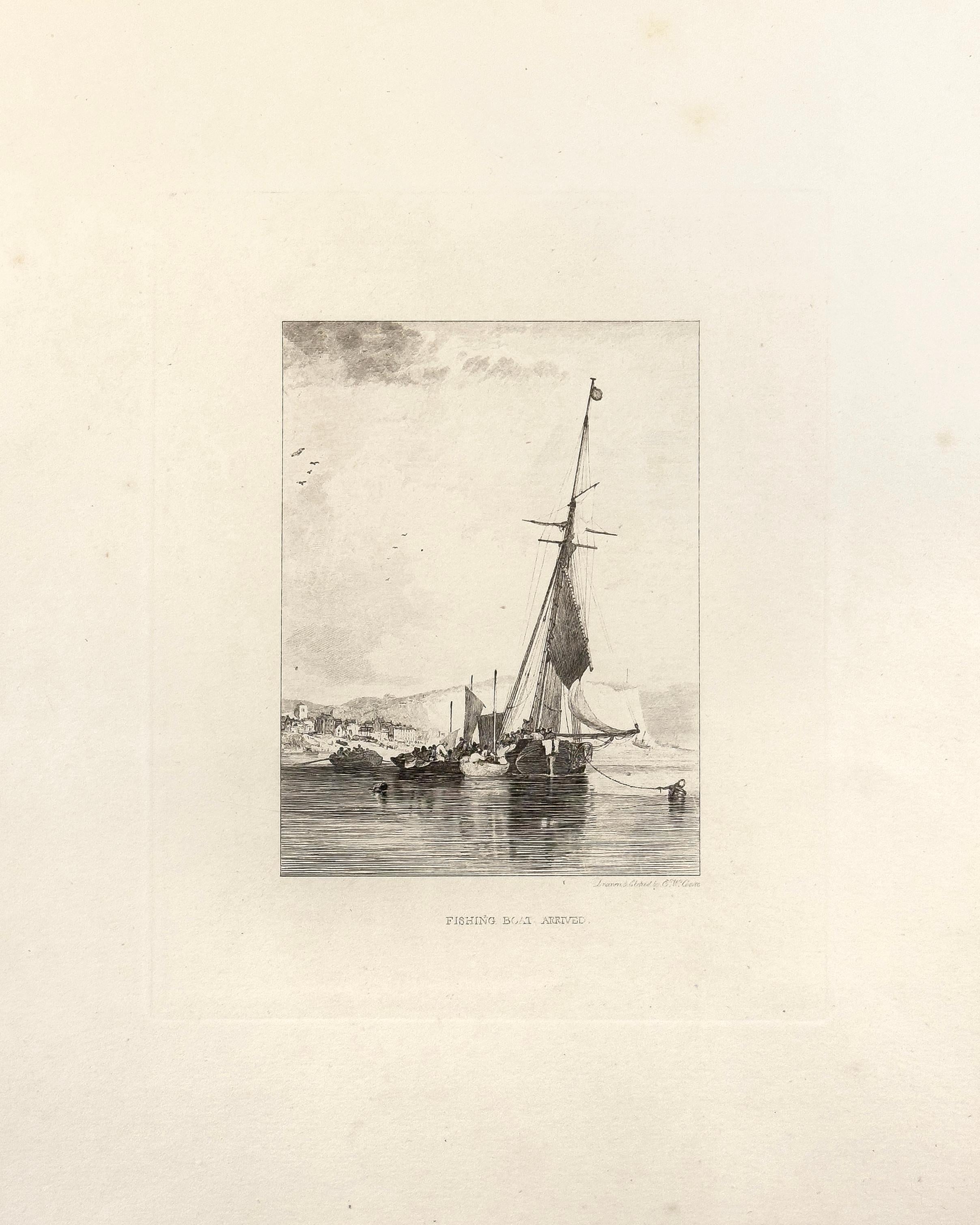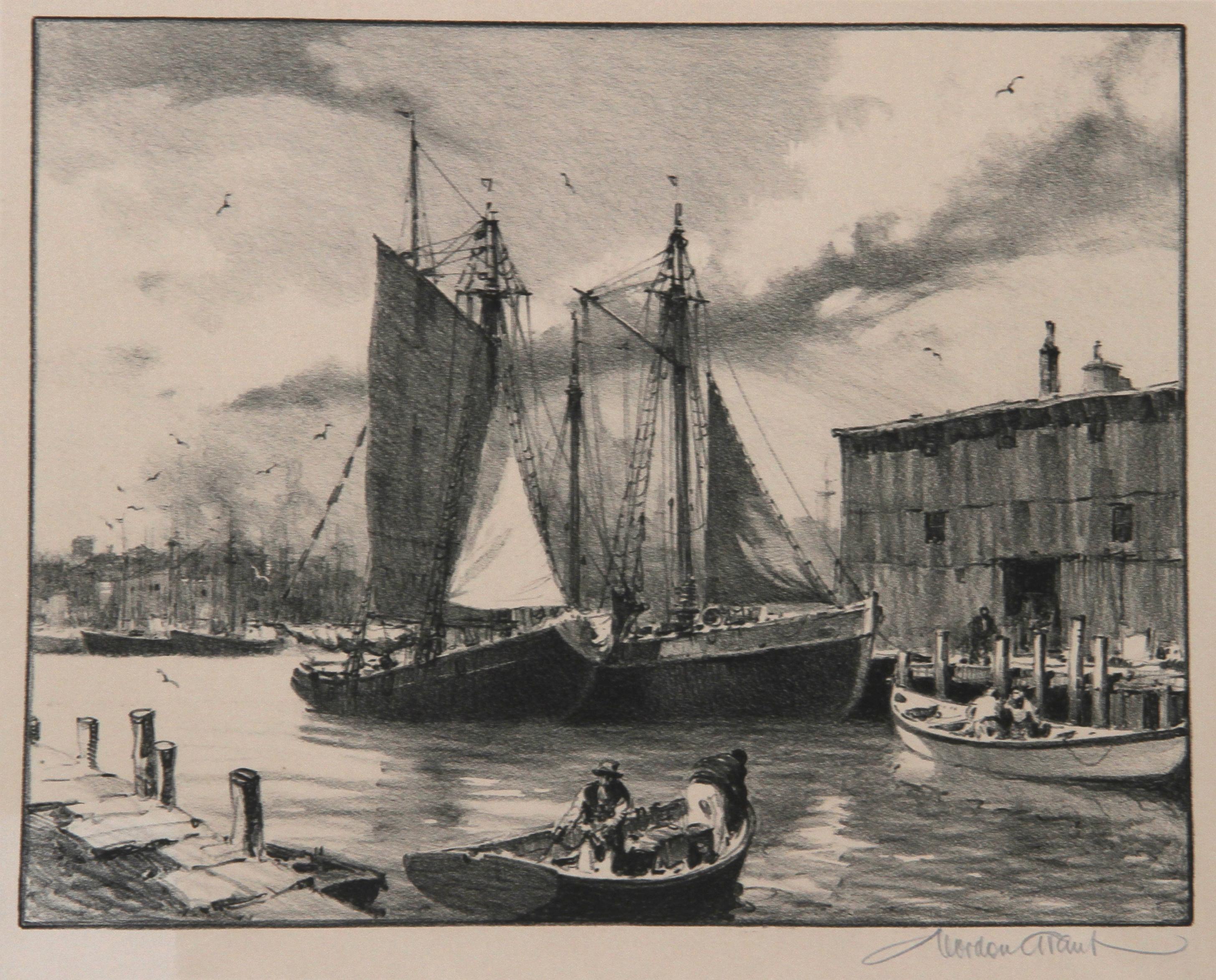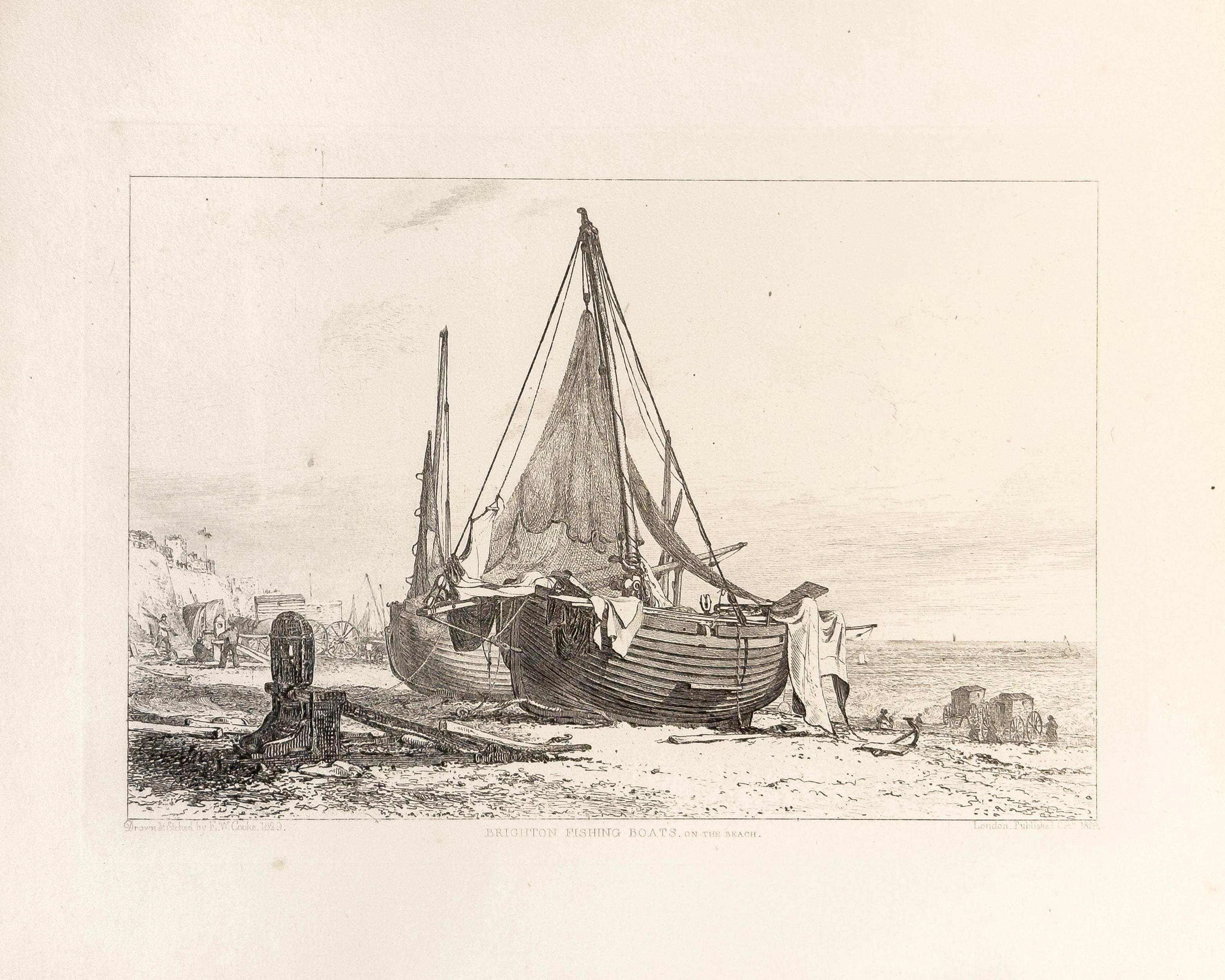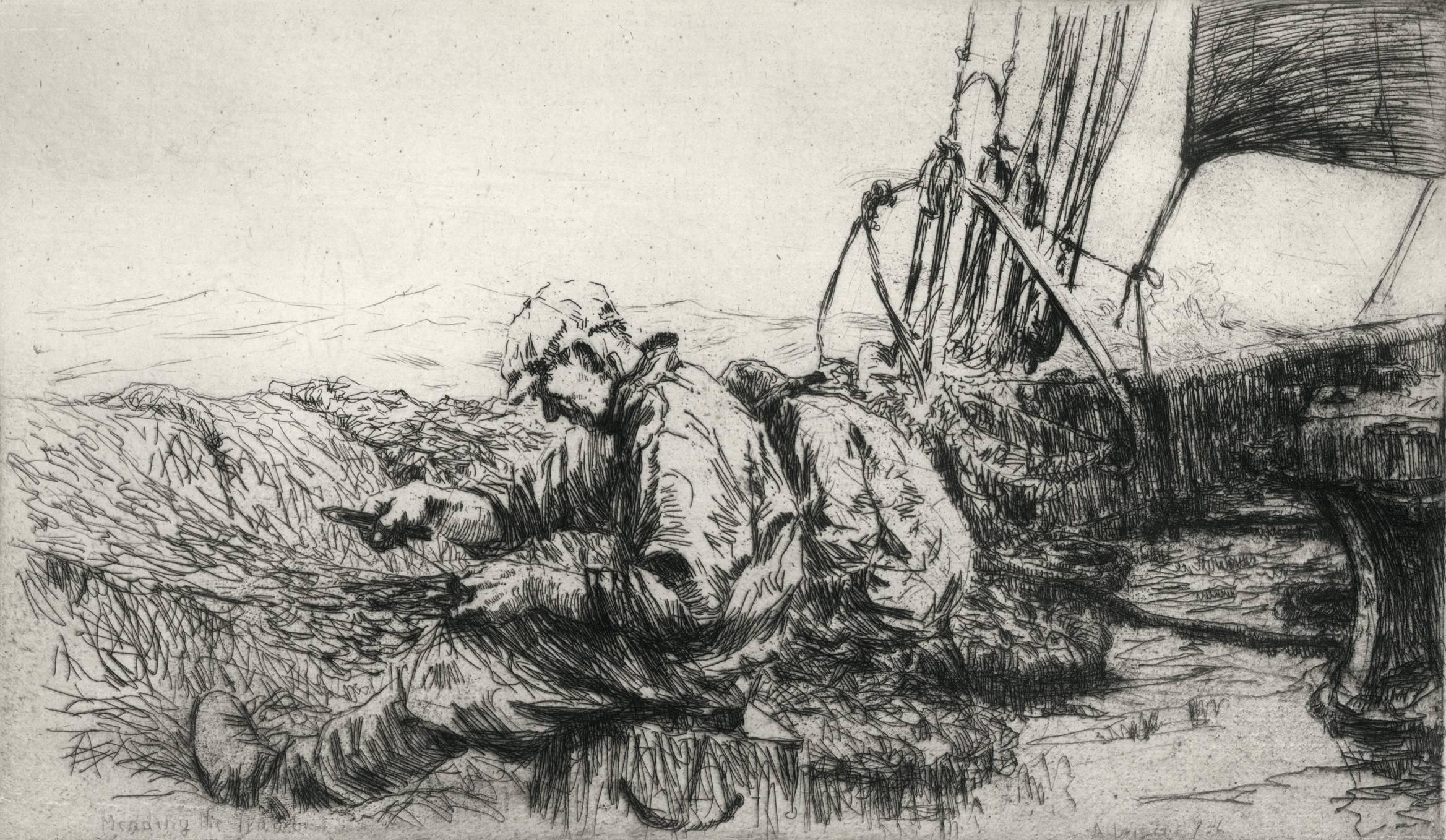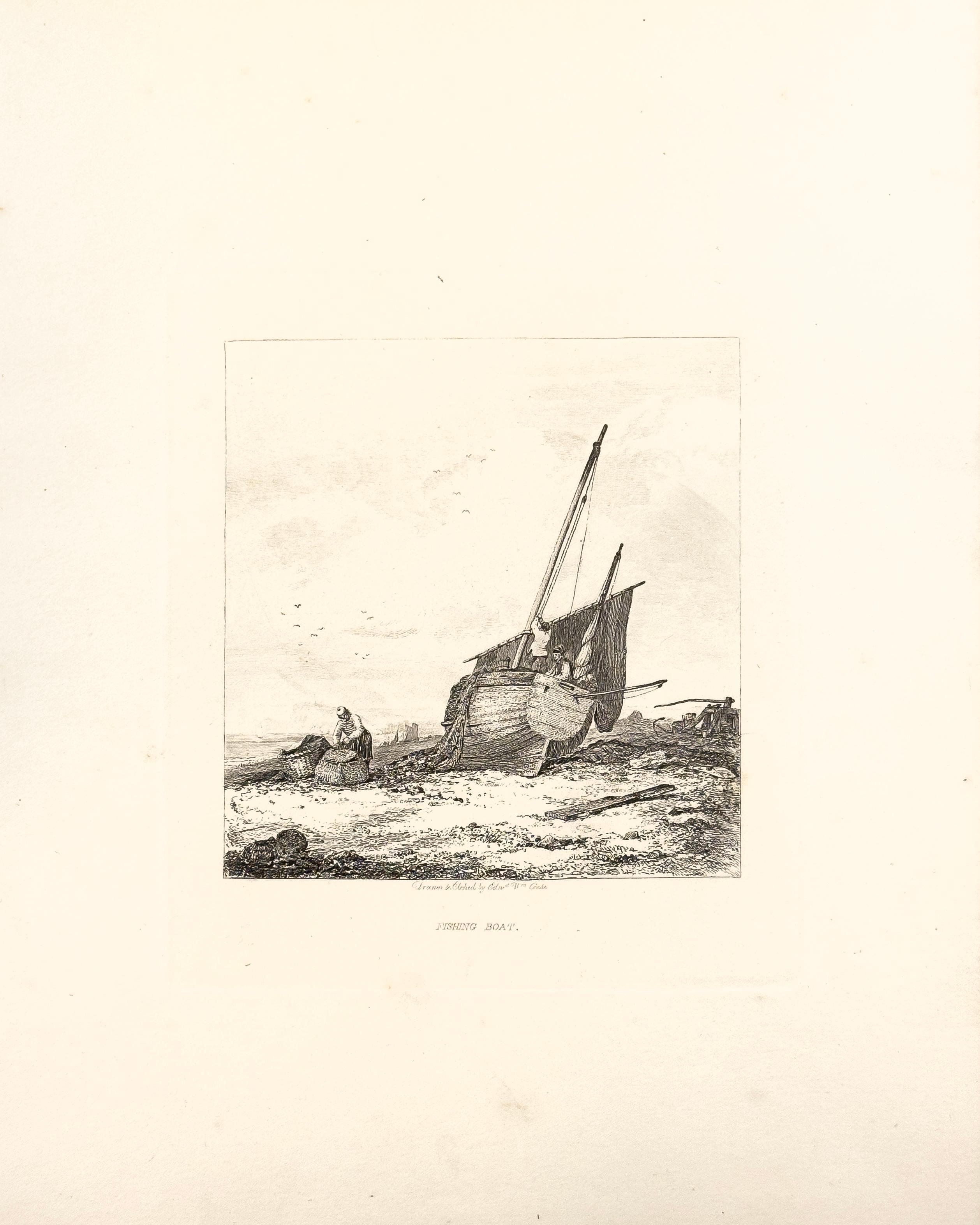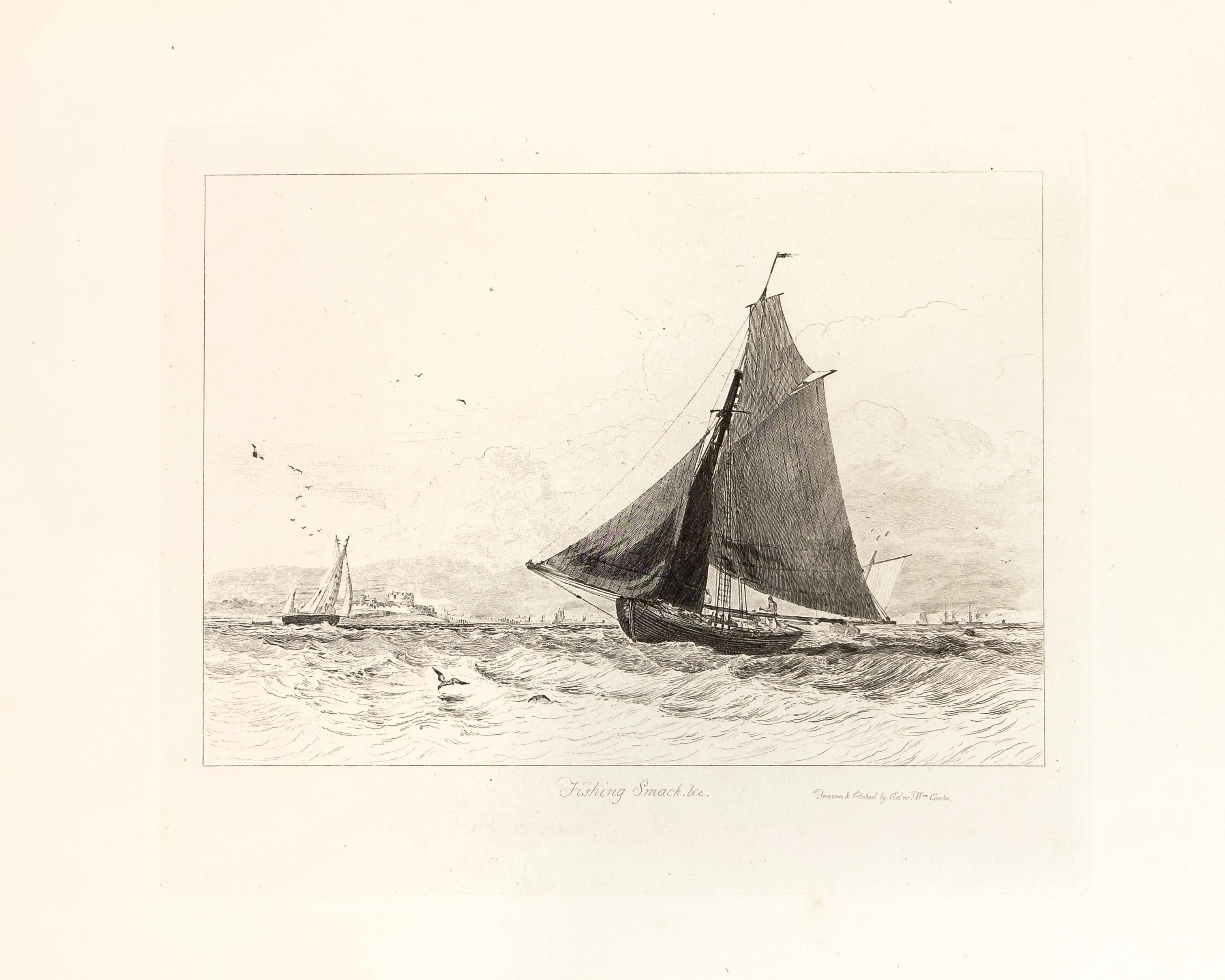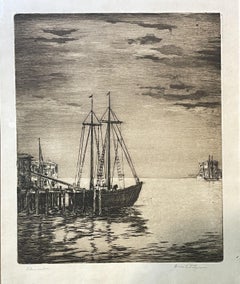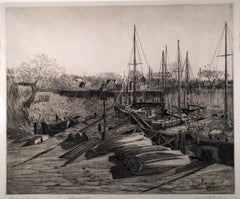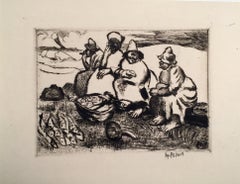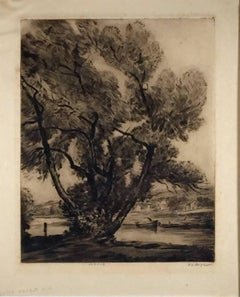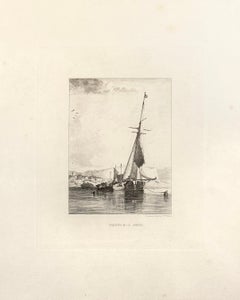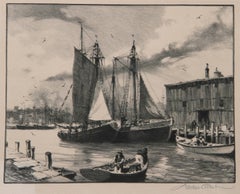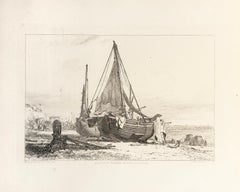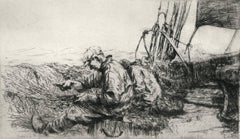Want more images or videos?
Request additional images or videos from the seller
1 of 5
George Elmer BrowneTHE TRAWLERS
$975
£743.88
€850.67
CA$1,373.98
A$1,498.18
CHF 795.07
MX$18,112.53
NOK 10,062.19
SEK 9,223.39
DKK 6,353.62
About the Item
Browne, George Elmer (American, 1871-1946). THE TRAWLERS. Drypoint, not dated. Edition size not stated. Titled and signed in pencil. In excellent condition.
- Creator:George Elmer Browne (1871 - 1946, American)
- Dimensions:Height: 16 in (40.64 cm)Width: 20 in (50.8 cm)
- Medium:
- Period:
- Condition:
- Gallery Location:Portland, ME
- Reference Number:1stDibs: LU367311298992
About the Seller
5.0
Recognized Seller
These prestigious sellers are industry leaders and represent the highest echelon for item quality and design.
Gold Seller
Premium sellers maintaining a 4.3+ rating and 24-hour response times
Established in 1966
1stDibs seller since 2016
363 sales on 1stDibs
Typical response time: 2 hours
Associations
International Fine Print Dealers Association
- ShippingRetrieving quote...Shipping from: Portland, ME
- Return Policy
More From This Seller
View AllGLOUCESTER
Located in Portland, ME
Johnson, Bess L. GLOUCESTER. Etching and aquatint, not dated. Edition size not known. Titled in pencil, lower left, and signed in pencil, lower right. Image of a boat at a dock in Gl...
Category
Mid-20th Century Landscape Prints
Materials
Etching, Aquatint
STERLING HARBOUR
Located in Portland, ME
Johns, Joan. STERLING HARBOUR. Etching, not dated, but probably 1950s-60s. titled, inscribed "Artist's Proof," and signed in pencil. Printed on heavy wove paper. 19 1/4 x 23 5/8 inch...
Category
1950s Landscape Prints
Materials
Etching
AWAITING THE BOATS RETURN
By George Overbury Hart
Located in Portland, ME
Hart, George Overbury (Pop). AWAITING THE BOATS' RETURN. Etching, not
dated. Edition size not known. Signed in pencil, lower right. 5 x 7
inches, 126 x 177 mm. (plate), 7 1/4 x 9 1/...
Category
Mid-20th Century Figurative Prints
Materials
Etching
CENTER HARBOR, NH
By Ralph L. Boyer
Located in Portland, ME
Boyer, Ralph L. (American, 1879-1952).
CENTRE HARBOR, N.H. Etching, not dated.
Number 12 of the edition of 60. Signed in pencil and inscribed "imp rlb" just below the image.
Further inscribed in the lower margin with the Title, the edition size and number, and the artist's name and "Westport, Conn." where he lived and worked.
9 7/8 x 7 3/4 inches (plate), 13 x 10 1/2 inches (sheet).
Tape residue at the upper corners, else in very good condition.
Boyer was well known as a sporting artist. Derrydale...
Category
Early 20th Century Landscape Prints
Materials
Etching
UNTITLED - SHIPPING YARD
By Edward A. Wilson
Located in Portland, ME
Wilson, Edward A. (American, born Scotland, 1886 - 1970). UNTITLED - SHIPPING YARD. Lithograph, 1945. Edition of 25, signed and numbered 23/25. 11 x 13 inches (image), 13 1/2 x 15 in...
Category
Mid-20th Century Landscape Prints
Materials
Lithograph
UNTITLED (LIGHTHOUSE, HOUSES AND BOATS).
By John T. Ross
Located in Portland, ME
Ross, John T. UNTITLED (LIGHTHOUSE, HOUSES AND BOATS). Color woodcut, not dated. Inscribed "proof," lower left, and signed lower right, in pencil. 9 x 14 7/8 inches (image), on a lar...
Category
Mid-20th Century Landscape Prints
Materials
Color, Woodcut
You May Also Like
02: Fishing Boat Arrived
Located in Columbia, MO
Edward William Cooke was born in Pentonville. His father, George Cooke, and uncle William Bernard Cooke were also well-known line engravers. Growing up in an environment of artists,...
Category
1820s Landscape Prints
Materials
Etching
Fisherman's Haven, Realist Lithograph by Gordon Grant
By Gordon Grant
Located in Long Island City, NY
Artist: Gordon Grant, American (1875 - 1962)
Title: Old Coaster
Year: circa 1940
Medium: Lithograph, signed in pencil
Image Size: 9 x 11 inches
Size: 11 in. x 16 in. (27.94 cm x 40.6...
Category
1940s American Modern Landscape Prints
Materials
Lithograph
36: Brighton Fishing Boats
Located in Columbia, MO
Edward William Cooke was born in Pentonville. His father, George Cooke, and uncle William Bernard Cooke were also well-known line engravers. Growing up in an environment of artists,...
Category
1820s Naturalistic Landscape Prints
Materials
Etching
Mending the Trawl, plate 3.
By Arthur John Trevor Briscoe
Located in Storrs, CT
Hurst 166. 6 7/8 x 11 3/4 (sheet 9 x 13 1/2). Edition 75, #73. A rich impression with dramatic plate tone, printed on cream laid paper with a foolscap watermark. Signed and numbered ...
Category
Early 20th Century Modern Figurative Prints
Materials
Etching
$1,000 Sale Price
48% Off
63: Fishing Boat
Located in Columbia, MO
Edward William Cooke was born in Pentonville. His father, George Cooke, and uncle William Bernard Cooke were also well-known line engravers. Growing up in an environment of artists,...
Category
1820s Naturalistic Landscape Prints
Materials
Etching
18: Fishing Smack
Located in Columbia, MO
Edward William Cooke was born in Pentonville. His father, George Cooke, and uncle William Bernard Cooke were also well-known line engravers. Growing up in an environment of artists,...
Category
1820s Naturalistic Landscape Prints
Materials
Etching
More Ways To Browse
Elaine Marshall
Elizabeth Verner
Frances Aronson
Gullah Art
John Mix Stanley
Jonathan Green Lithographs
Jonathan Green Signed Art
Jonathan Green Signed Print
Miami Poster
Monet Style Landscape
Montaut Lithograph
Pembroke College Oxford
Pennell Joseph Etchings
Peter Davies
Prairie Print Maker
Southwest Lithographs
St Andrews Prints
Tanna Kasimir
